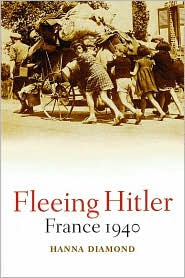 On 14 June 1940 German tanks swept into Paris. That the city would fall to the Nazis was by then a foregone conclusion; it had been declared an ‘open city’ the day before. In other words, it would put up no resistance against the invaders. The government had already packed up and left.
On 14 June 1940 German tanks swept into Paris. That the city would fall to the Nazis was by then a foregone conclusion; it had been declared an ‘open city’ the day before. In other words, it would put up no resistance against the invaders. The government had already packed up and left.
By 14 June, four-fifths of Parisians had also fled the city, leaving it looking as though it had been stricken by some medieval disaster such as a great plague. Little more than a week later Hitler would make a propaganda visit to Paris and have his picture taken beneath the Eiffel Tower.
Yet, despite the magnitude of the exodus in which literally millions of people took to the roads in any form of transport they could find, including push-carts and bicycles, it has been little written about by professional historians, as though it has been crowded out by the attention given to the Vichy regime, the resistance, and the occupation.
 Hanna Diamond‘s new book, Fleeing Hitler: France 1940 (OUP) sets out to redress the balance by providing a detailed account of those hot June days when Parisians sought to put as much distance as possible between themselves and the advancing German army. Though most set out with little idea of where they were going, and many spoke later of the ‘holiday mood’ of their adventure, 100,000 citizens were to die as they fled.
Hanna Diamond‘s new book, Fleeing Hitler: France 1940 (OUP) sets out to redress the balance by providing a detailed account of those hot June days when Parisians sought to put as much distance as possible between themselves and the advancing German army. Though most set out with little idea of where they were going, and many spoke later of the ‘holiday mood’ of their adventure, 100,000 citizens were to die as they fled.
In my interview with Hanna Diamond we talk about the events on the road, and also the way in which the Vichy regime quickly created its own myths around the exodus.
Podcast: Play in new window | Download

As a publisher of World War II and Holocaust survivors’ stories, I very much appreciated Dr. Diamond’s book, and am impressed with the meticulous research and insight in an area that has been mostly neglected by historians. I recommend the book to anyone interested in seeing and feeling beyond the obvious history of the period.